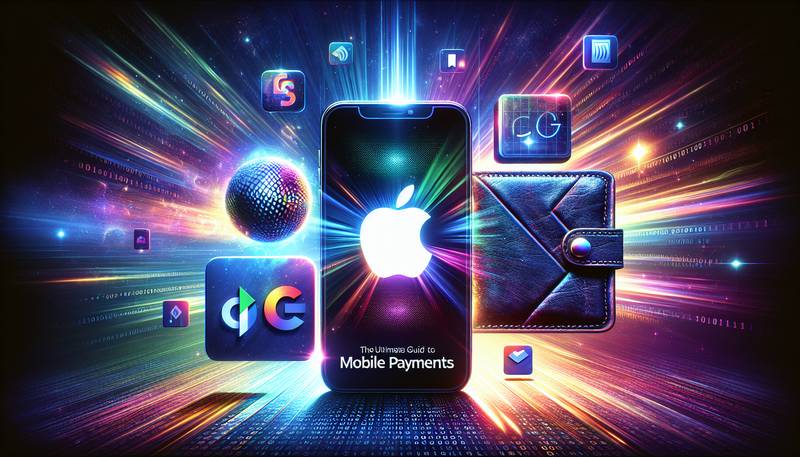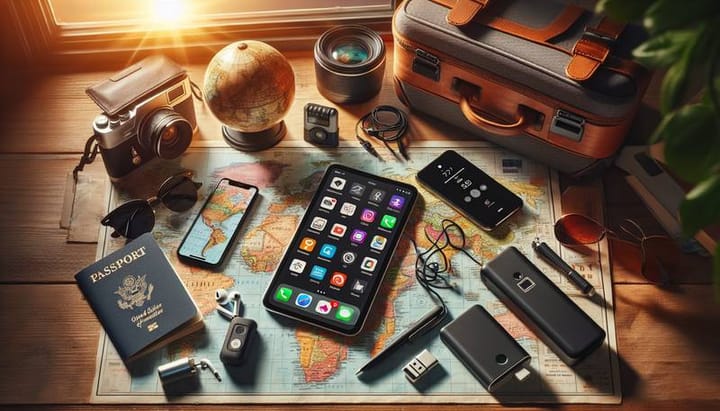Ultimate Guide to Mobile Payments: Apple Pay, Google Wallet, and More

Welcome to our comprehensive and slightly whimsical guide to navigating the maze of mobile payments! As technology leaps forward, the humble wallet is getting a digital overhaul. Thanks to the marvels of modern smartphones, we can now make purchases with a simple tap or a swipe. This guide will whisk you through the ins and outs of mobile payment options such as Apple Pay, Google Wallet, and their contemporaries. Prepare to be enlightened, entertained, and maybe even a little excited about the future of financial transactions!
The Evolution of Mobile Payments
Remember the days when you had to carry around a bulky wallet, stuffed to the brim with cash, coins, and a stack of cards that you only used once in a blue moon? Thankfully, those days are becoming a distant memory with the advent of mobile payments. This revolutionary method has transformed our phones into digital wallets, capable of paying for our coffee, clothes, or even cars with a simple touch. The journey began in the early 2000s, but it wasn't until tech giants like Apple and Google stepped in that mobile payments really took off. Early adopters loved the novelty and convenience, while skeptics raised their brows (and valid concerns) over security. Fast forward to today, and mobile payments are not just a convenience but a necessity, providing contactless, hygienic transactions in a world where physical contact suddenly has new implications. Let's dig deeper into how this all began and where it is heading!
Apple Pay: The Pioneer of Mobile Payments
Let's start with the trailblazer, shall we? Apple Pay burst onto the scene in October 2014, and it was a game changer. This payment system allows users of Apple devices to make payments in person, in iOS apps, and on the web. It's akin to having a digital wallet that houses your credit and debit card details, securely tucked away in your iPhone or Apple Watch.Setting up Apple Pay is like a breeze on a hot summer day. Just open the Wallet app on your iPhone, tap the "+" sign, and follow the prompts to add a new card. Verification is usually done via a text message or a call to your bank, and voilà, you're ready to tap and pay anywhere that accepts contactless payments.Beyond its ease of use, Apple Pay's security is tighter than a drum. Your card details are never stored on your device or shared with merchants. Instead, Apple uses a unique device account number with a transaction-specific dynamic security code. Lost your iPhone? No problem. You can use the 'Find My iPhone' feature to suspend payments from the device, keeping your financial information out of nefarious hands.
Google Wallet: Android's Answer to Mobile Payments
Not one to be left behind in the digital dust, Google unveiled its own mobile payment solution aptly named Google Wallet. Initially launched in May 2011 as a peer-to-peer payment service, it later merged with Android Pay (remember that?) to form Google Pay in January 2018. Designed for Android devices, Google Wallet functions much like Apple Pay, allowing users to store credit, debit, loyalty, and gift cards on their smartphones.To get started, download the Google Pay app from the Play Store, snap a picture of your card, verify it, and you're all set to indulge in some tap-to-pay goodness. Google Wallet works with NFC (Near Field Communication) technology, which enables secure communication between your device and the payment terminal. Say goodbye to swiping or inserting cards.But what about security? Fear not. Google Wallet boasts multiple layers of security, including a virtual account number that keeps your actual card details masquerading in disguise. Should your Android device ever wander off, you can lock it, secure it with a new password, or wipe it clean with the 'Find My Device' function. Google's got your back (and your bank).
Other Mobile Payment Options
While Apple Pay and Google Wallet may appear to be the Goliaths in the mobile payment arena, a troop of Davids has emerged offering their own innovative and competitive solutions. Let's not forget about Samsung Pay, which works with almost all new terminals due to its nifty MST (Magnetic Secure Transmission) technology alongside NFC. Then there's PayPal, the O.G. of digital payments, which has expanded its horizons beyond online purchases to brick-and-mortar stores. And let's sprinkle in some Venmo, Cash App, and Zelle for peer-to-peer transactions that make splitting restaurant bills and sending money to friends as easy as sending a text message. These apps may not have the same seamless integration with point-of-sale systems as Apple or Google, but they're chipping away at the market, offering unique features and tremendous convenience. The landscape of mobile payment options doesn't end here. As you explore, you'll find regional players and burgeoning technologies creeping into the mix, all aiming to simplify the way you spend your hard-earned cash.
Mobile Payment Security
For many, the Achilles' heel of embracing mobile payments is concern over security. After all, the thought of our financial details floating around in the ether can send shivers down anyone's spine. But fear not - mobile payments are fortified with advanced security features tailored to protect your precious monetary digits.Security in mobile payments typically centers around encryption and tokenization. Encryption scrambles your data, turning it into a code that is unfathomable to all but the payment processor. Tokenization, on the other hand, replaces your sensitive card details with randomly generated numbers, or 'tokens', rendering them useless to hackers. Furthermore, many mobile payment platforms require additional authentication, such as biometrics (think face ID or fingerprint scanning) or a passcode, which serves as an extra bulwark against unauthorized transactions. To amp up your security game, always ensure that your device's operating system is up to date, as these updates often include the latest security patches.
The Future of Mobile Payments
As we hurtle forward into an increasingly digital age, mobile payments are evolving at a breakneck pace. Imagine a world where paying for your groceries is as simple as a nod at the checkout or where your car pays for its own fuel – these scenarios might not be too far off.The future of mobile payments may see even more integration into our daily lives, with wearable technology, like smartwatches and fitness trackers, becoming new payment portals. Biometric authentication is also expected to become more prevalent, potentially extending to retina scans or even voice recognition. Additionally, the rise of cryptocurrency and blockchain technology could revolutionize the mobile payment sector, offering even more secure and instantaneous transactions, with enhanced privacy. While it might sound like the stuff of science fiction, these advancements are inching closer to reality. Mobile payments are not just changing how we pay; they're transforming the very fabric of commerce.
Final Thoughts on Mobile Payments
As our journey through the world of mobile payments concludes, it's clear that the days of digging through your pockets for loose change are waning. With options like Apple Pay, Google Wallet, and an assembly of others at our fingertips, every payment is becoming a breeze. The combination of convenience and security is a compelling argument for making the switch to digital.While it's true that the landscape is evolving and there might be growing pains along the way, the trajectory is unmistakable. Innovation continues to drive the market forward, with user experience at its core. Whether you're an early adopter ready to ditch your traditional wallet or a hesitant observer, the mobile payment train is leaving the station, and it's an exciting time to hop on board.So embrace the change, explore your options, and indulge in the simplicity of mobile payments. They're not just a fleeting trend but the blueprint for a streamlined, secure, and savvy financial future. Happy tapping!


